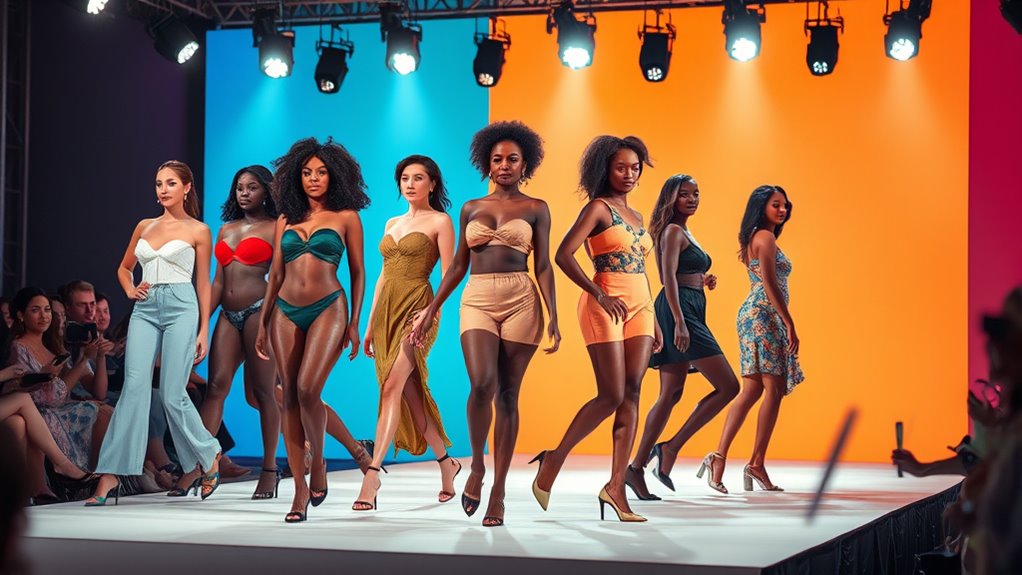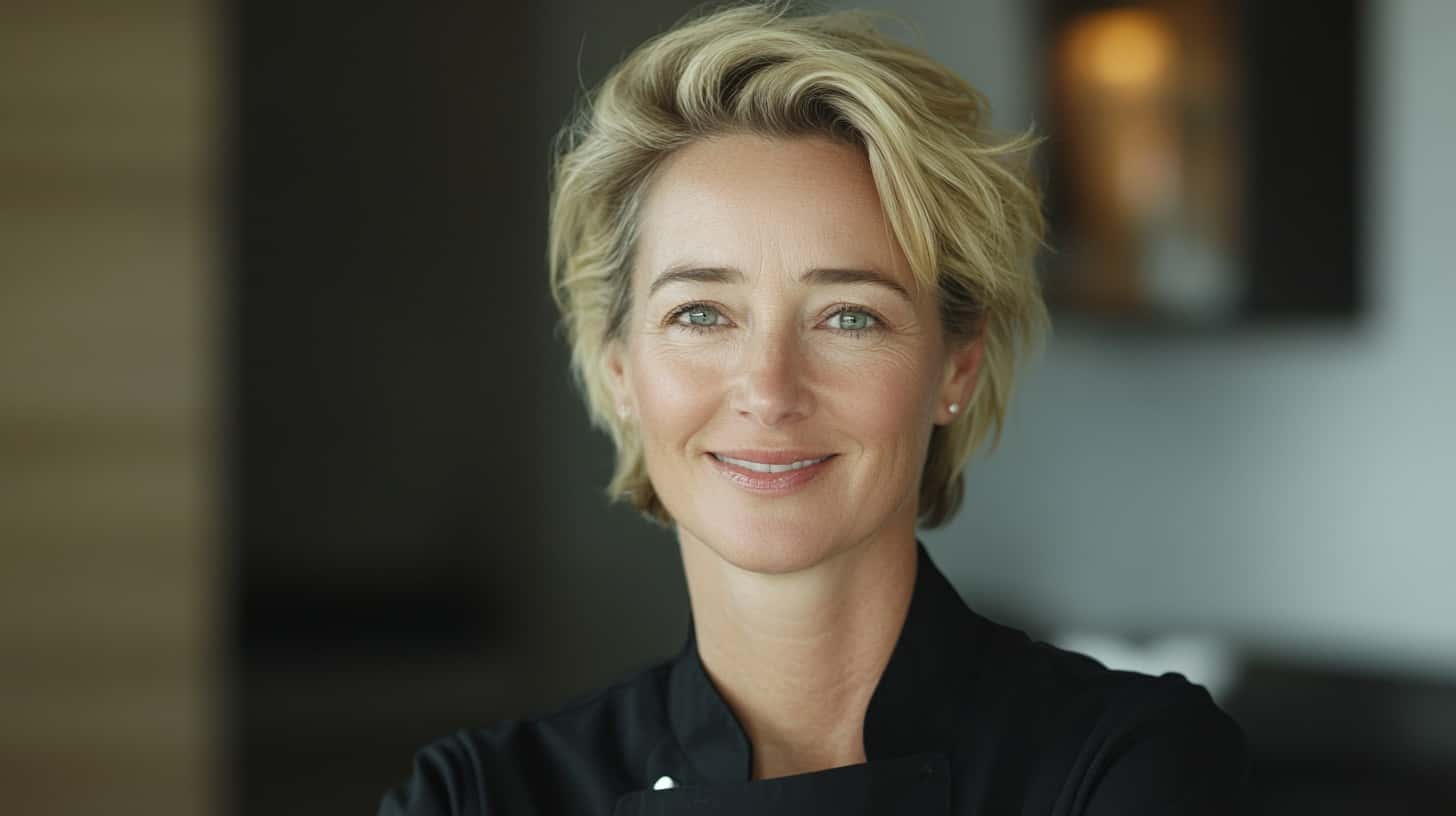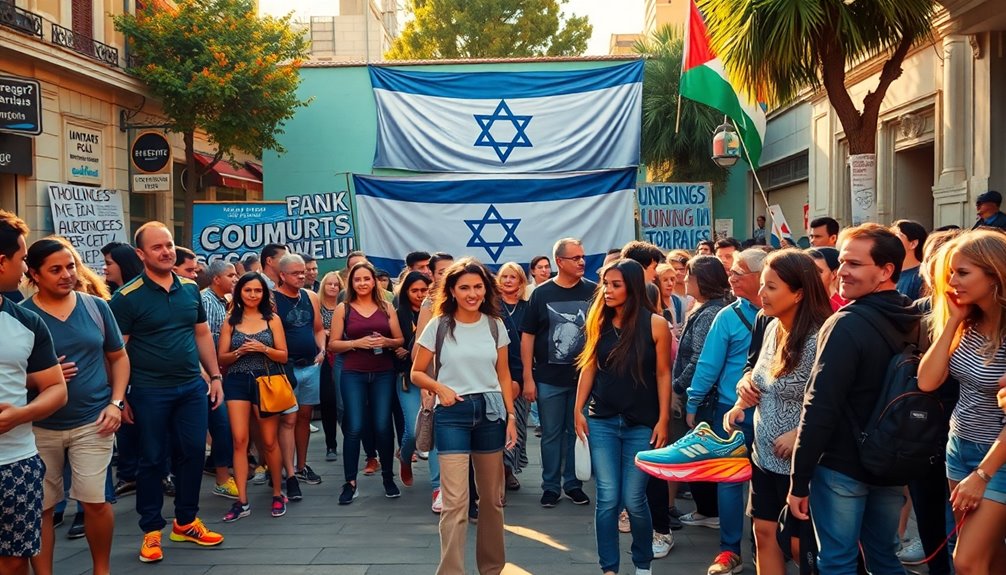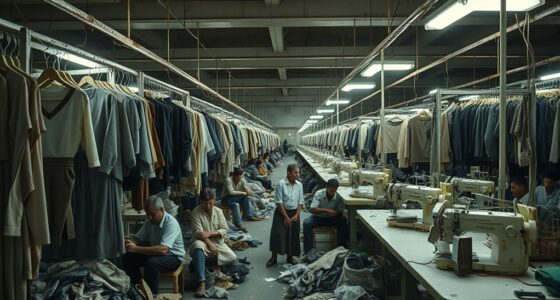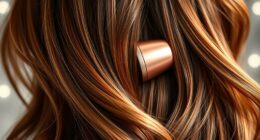Media and cultural standards heavily influence how you see beauty, shaping your self-image and societal expectations. When you compare yourself to idealized images, it can lead to dissatisfaction and low self-esteem. These narrow standards often promote limited body types and features, making it hard to feel confident. Recognizing the impact of these ideals helps you embrace diversity and focus on your true worth. To explore how these standards shape society and your perception, keep exploring further.
Key Takeaways
- Media-driven beauty standards influence fashion trends, often promoting narrow and unrealistic body ideals.
- Fashion industry practices can both reflect and reinforce societal beauty norms, affecting body image perceptions.
- The emphasis on certain body types in fashion can lead to exclusion and increased self-esteem issues among diverse populations.
- Promoting body diversity in fashion helps challenge traditional beauty standards and fosters inclusivity.
- Recognizing media’s role in shaping beauty ideals encourages healthier self-image and critical consumption of fashion and beauty content.
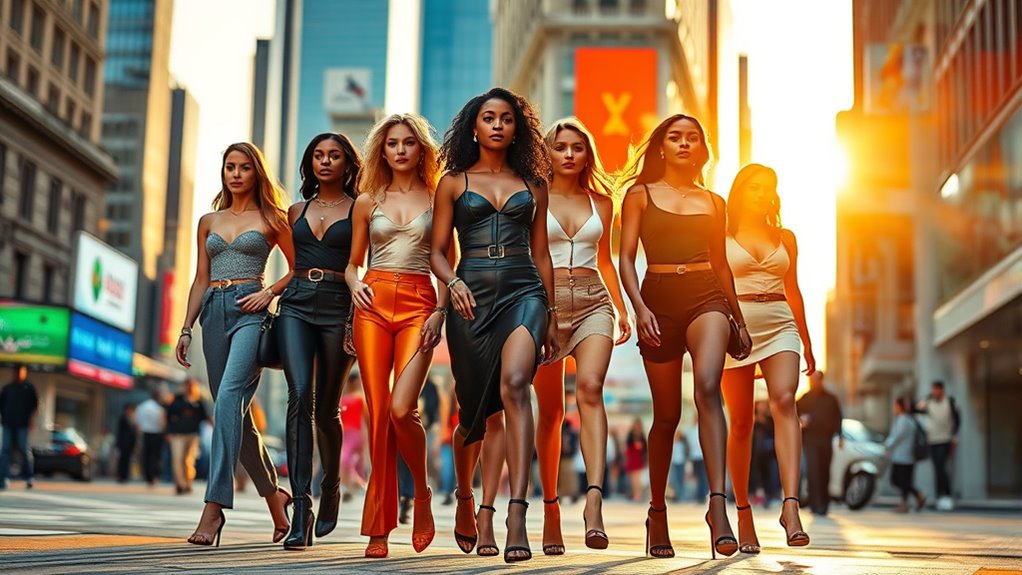
Have you ever wondered how fashion influences the way you see your body? It’s not just about clothing choices; it’s about the powerful messages that shape your perceptions of beauty. Cultural influences play a major role in this, as different societies have their own ideals and standards that define what’s considered attractive. For example, some cultures emphasize slender figures, while others celebrate fuller bodies. These standards are deeply rooted in history, tradition, and societal values, and they influence how you view yourself and others. When you see images of beauty in your culture, they often reflect these norms, subtly guiding your ideas of what you should look like. Media representation amplifies this effect. It’s everywhere—magazines, TV, social media, billboards—and it constantly bombards you with images of “ideal” bodies. These representations are often narrow, showcasing a limited range of body types, skin colors, and features. Over time, your brain begins to associate these images with beauty, success, and happiness. If you don’t see yourself reflected in these images, it can lead to feelings of inadequacy or self-doubt. Media doesn’t just mirror cultural standards; it also shapes them, creating a cycle where what’s portrayed as beautiful becomes the standard everyone aspires to meet. As a result, you might find yourself comparing your body to these idealized images, feeling dissatisfied or pressured to conform. This constant exposure can distort your self-image, making you believe that only certain looks are acceptable or desirable. You may start to see your own body as flawed or not enough, even if it’s healthy and unique. The influence of cultural norms and media representation can also impact your confidence and self-esteem. When you internalize these beauty standards, you might feel that your worth depends on fitting into a certain mold. But it’s important to recognize that these standards are often unrealistic and exclusionary. Recognizing the impact of media on perceptions of beauty can help you develop a healthier, more realistic view of your body. Embracing this diversity can help you develop a healthier, more realistic view of your body. Understanding how cultural influences and media representation shape your perceptions is the first step toward challenging narrow beauty standards. Instead of letting these false ideals define you, focus on appreciating your body for what it is—unique, capable, and beautiful in its own way. Remember, true beauty isn’t about conforming to external standards; it’s about feeling confident and comfortable in your own skin.
Frequently Asked Questions
How Do Social Media Trends Influence Individual Body Image?
Social media trends greatly influence your body image by shaping perceptions and expectations. Influencer influence plays a key role, often promoting idealized images that can impact your self-esteem. While some trends encourage body positivity, others may reinforce unrealistic standards. You might find yourself comparing to curated content, which can affect how you view yourself. Staying mindful of these influences helps you develop a healthier, more balanced self-image amidst the evolving social media landscape.
What Role Do Fashion Brands Play in Shaping Beauty Standards?
Fashion brands play a significant role in shaping beauty standards through advertising influence and celebrity endorsements. You’re often exposed to images of idealized beauty crafted by these brands, which set trends and expectations. When celebrities endorse certain styles or looks, it amplifies their impact, making these standards seem desirable and attainable. This dynamic influences your perceptions of beauty and fashion, reinforcing societal norms and shaping what’s considered fashionable or beautiful.
Are There Cultural Differences in Perceptions of Beauty and Fashion?
You’ll notice that perceptions of beauty and fashion vary widely across cultures. Different societies celebrate unique cultural beauty ideals, influencing what’s considered attractive or fashionable. These cultural beauty standards shape fashion perceptions, often reflecting local traditions, values, and history. By understanding these differences, you gain a broader perspective on how beauty evolves globally, recognizing that what’s deemed stylish or beautiful in one culture might differ markedly elsewhere.
How Can Individuals Develop a Healthy Body Image Amidst Societal Pressures?
To develop a healthy body image, you should practice self-acceptance strategies like positive self-talk and setting realistic goals. Additionally, media literacy education helps you critically analyze images and messages, reducing their impact on your self-esteem. Remember, focusing on your strengths and embracing diversity fosters confidence. By actively challenging societal pressures and understanding media influence, you can maintain a balanced, positive view of your body.
What Is the Impact of Fashion Industry Diversity on Beauty Standards?
Fashion fosters freedom through diversity, dramatically defining beauty standards. Runway inclusivity and celebrity endorsements showcase varied voices, challenging narrow ideals. When fashion embraces different sizes, skin tones, and backgrounds, it broadens perceptions, inspiring confidence. This dynamic diversity influences society, helping you see beauty beyond stereotypes. Ultimately, inclusive fashion empowers you to embrace your unique look, encouraging authenticity and acceptance in a world craving genuine representation.
Conclusion
So, next time you chase society’s perfect image, remember it’s a mirage—shiny, tempting, but impossible to catch. You spend hours shaping your body to fit an ideal that’s constantly changing, all while missing your true self. Ironically, in a world obsessed with appearance, authenticity becomes the real standout. Maybe it’s time to stop chasing illusions and start embracing your unique, imperfect beauty—because that’s the one image that truly matters.
